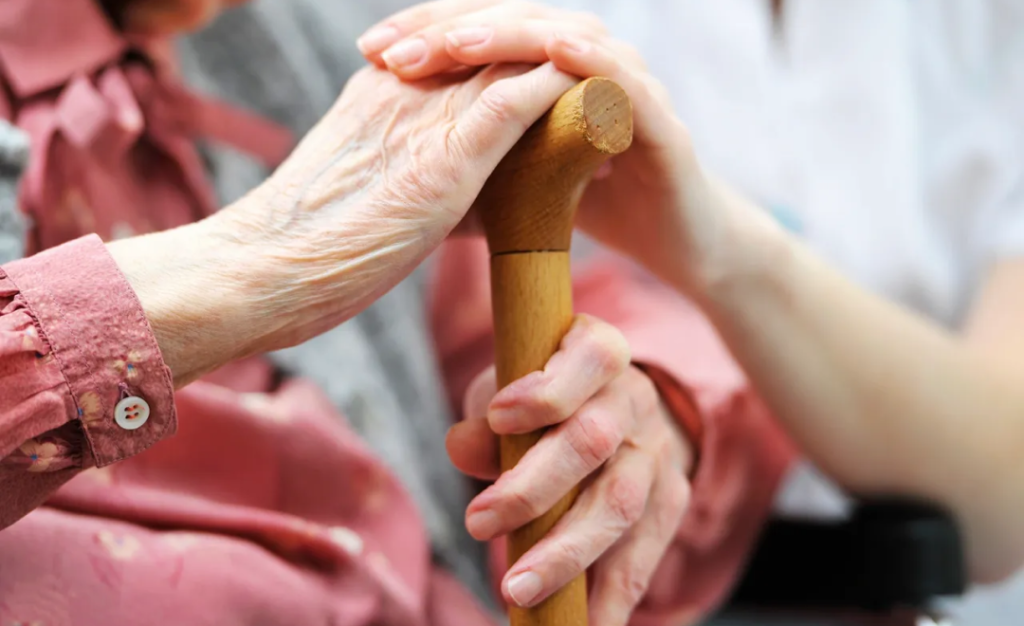Future-Proofing Your Care Home: A Comprehensive Guide for the Digital Age

In today's rapidly evolving world, the care sector faces unprecedented challenges and opportunities. Technological breakthroughs, shifting demographics, and rising expectations from residents and their families are reshaping the industry, demanding a proactive approach to ensure care homes not only survive but thrive. At Spark Care, we're passionate about empowering care providers to navigate this dynamic landscape, leveraging the latest innovations to create care environments that are not just future-proof but truly exceptional.
In this in-depth guide, we'll delve into the strategies and insights that will enable your care home to stay ahead of the curve. We'll explore the transformative power of technology, the importance of designing for adaptability, the art of nurturing a resilient workforce, and the benefits of embracing sustainability. Let's embark on a journey toward a brighter, more sustainable, and technologically advanced future for care.
Key Takeaways
- Technology as a Catalyst: Discover how embracing the latest advancements in care technology can transform the way you deliver care, from AI-driven care planning to fall detection systems.
- Design for the Future: Learn how adaptable spaces, accessible design, and a focus on personalisation can create a welcoming and empowering environment for residents.
- Nurture Your Workforce: Explore strategies for attracting, retaining, and empowering your staff, promoting a culture of innovation and excellence.
- Sustainability as a Priority: Understand the benefits of green initiatives and how they can positively impact your care home's environmental and financial performance.
Embracing Technological Advancements
Technology is no longer a luxury in the care sector; it's a necessity. The digital age has ushered in a wave of innovations that are revolutionising care delivery, enhancing resident safety and well-being, and empowering care staff to provide more personalised and effective care.
Fall Detection and Prevention: A Proactive Approach to Safety
Falls are a major concern in care homes, often leading to serious injuries and a decline in residents' quality of life. Fortunately, technology offers innovative solutions for fall detection and prevention.
- Smart Sensors and AI-powered Analytics: Imagine a care home equipped with a network of discreet, intelligent sensors that continuously monitor residents' movements, gait patterns, and vital signs. Advanced AI algorithms analyse this data in real-time, identifying subtle changes that could indicate an increased risk of falling. This proactive approach empowers care staff to intervene early with personalised fall prevention strategies, such as balance exercises, medication reviews, or environmental modifications.
- Wearable Devices: Wearable devices, such as smartwatches or pendants, offer an additional layer of protection. These devices can detect falls automatically and send alerts to staff, enabling a swift response even if the resident is unable to call for help.
AI-Driven Care Planning Platforms: The Power of Personalisation
Gone are the days of generic, one-size-fits-all care plans. Today, AI-powered platforms are transforming the way care is planned and delivered.
- Data-Driven Insights: These platforms leverage AI to analyse vast amounts of data, including medical histories, medication records, activity logs, and even social interactions. This comprehensive view of each resident empowers care staff to create dynamic and individualised care plans that adapt in real-time to their evolving needs and preferences.
- Proactive Interventions: By identifying patterns and trends in resident data, AI-powered platforms can predict potential health risks or challenges before they escalate. This enables care staff to take proactive measures, such as adjusting medication dosages, implementing preventative therapies, or connecting residents with specialised healthcare professionals.
- Seamless Communication: AI platforms also facilitate communication between care teams, residents, and families. By providing a centralised repository for care information, everyone stays informed and aligned, ensuring a collaborative and transparent approach to care delivery.
Telemedicine and Remote Monitoring: Enhancing Access to Care
The ability to connect residents with healthcare professionals remotely via video consultations has transformed the way care homes access and deliver healthcare services.
- Reducing Hospital Visits: Telemedicine reduces the need for disruptive hospital visits, especially for routine check-ups or minor health concerns. This improves continuity of care, reduces stress for residents, and saves valuable time and resources for both residents and care staff.
- Specialised Consultations: Telemedicine enables residents to access specialist consultations without the need for travel or long waiting lists. This improves access to specialised care and ensures residents receive the timely and expert advice they need.
- Remote Monitoring: Wearable devices and remote monitoring systems enable continuous tracking of residents' vital signs and health data, providing early warnings of any changes that might require attention. This proactive approach to health management can prevent complications and improve overall well-being.
Virtual Reality and Reminiscence Therapy: Enhancing Engagement and Well-being
Technology isn't just about medical care; it also plays a crucial role in promoting emotional and cognitive well-being. Virtual reality (VR) and reminiscence therapy are two powerful tools that can enhance residents' quality of life.
- Immersive Experiences: VR can transport residents to new worlds and cherished memories, offering a sense of adventure, joy, and connection. Whether it's exploring exotic landscapes, revisiting childhood homes, or participating in interactive games, VR provides cognitive stimulation, emotional support, and a welcome escape from the confines of the care home.
- Pain Management and Anxiety Reduction: VR has also shown promising results in pain management and anxiety reduction. By immersing residents in calming environments or distracting them from physical discomfort, VR offers a non-pharmacological intervention that can improve overall well-being.
- Reminiscence Therapy: This therapeutic approach involves recalling past experiences and memories, often aided by photos, music, or objects from the past. Reminiscence therapy can improve mood, reduce agitation, and stimulate cognitive function, particularly for residents with dementia or cognitive impairment.
Assistive Technologies: Empowering Independence
Assistive technologies play a crucial role in enabling residents to maintain their independence and control over their environment.
- Smart Home Devices: From voice-activated lighting and temperature controls to automated window shades and door openers, smart home devices can significantly enhance a resident's ability to navigate their living space with ease and confidence.
- Communication Aids: For residents with hearing or speech impairments, communication aids such as amplified telephones, text-to-speech devices, and video communication tools can break down barriers and foster social connections.
Overcoming the Tech Hurdles
We understand that embracing new technology can be a journey. Staff may require training and support to adapt to new systems, and concerns about data security and privacy must be addressed proactively. At Spark Care, we're committed to partnering with care providers to ensure a smooth and successful transition to new technologies.
- Comprehensive Training and Support: We offer tailored training programs to empower your staff to use new technologies effectively and confidently. We also provide ongoing support and troubleshooting to ensure seamless integration and optimal performance.
- Data Security and Privacy: We prioritise data security and privacy, implementing robust measures to protect sensitive resident information. We also guide you in developing transparent communication strategies to ensure residents and families are informed and empowered regarding the use of their data.
Designing for Adaptability: Creating Spaces That Evolve
The physical environment of your care home plays a pivotal role in its ability to adapt to future needs. Flexibility, accessibility, and a profound sense of home are the cornerstones of future-proof design.
Flexible Spaces for Changing Needs
Rigid, institutional layouts are a relic of the past. Future-forward care homes embrace adaptable spaces that can be reconfigured to accommodate changing demographics, emerging care models, and individual preferences.
- Multi-Purpose Rooms: These versatile spaces can seamlessly transform from dining areas to activity centres to quiet lounges, catering to the diverse rhythms of daily life and maximising the use of available space.
- Convertible Layouts: Rooms that can expand or contract offer unparalleled flexibility, catering to the unique needs of each resident. Whether it's creating a spacious environment for a wheelchair user or a cosy nook for quiet reflection, adaptability is key.
Accessible Design: Empowering Independence
Accessible design principles, woven into the very fabric of the building, ensure that residents of all abilities can navigate the environment with dignity, independence, and a sense of empowerment.
- Barrier-Free Environments: Wide doorways, level thresholds, and accessible bathrooms create a seamless experience for residents with mobility challenges.
- Sensory Considerations: Thoughtful design incorporates elements that cater to various sensory needs. This includes adequate lighting, contrasting colours for visual clarity, and sound-absorbing materials to minimise noise and promote a calm atmosphere.
Creating a Sense of Home and Belonging
A care home should be more than just a place to receive care; it should be a sanctuary where residents feel a profound sense of belonging, comfort, and connection.
- Personalisation: Empower residents to personalize their living spaces with cherished possessions, artwork, and furniture that reflects their unique identities. Encourage them to participate in decision-making about their environment, promoting a sense of control and autonomy.
- Community and Social Connections: Create a sense of community by designing shared spaces that encourage interaction and engagement. From cosy lounges to vibrant activity areas, these spaces provide opportunities for residents to connect, pursue hobbies, and build lasting friendships.
- Independence and Autonomy: Promote independence by providing opportunities for residents to participate in decision-making, engage in meaningful activities, and maintain their self-care routines. This fosters a sense of purpose and control, enhancing overall well-being.
Nurturing a Resilient Workforce: The Heart of Exceptional Care
The heart and soul of any care home lies in its dedicated staff. In an era marked by workforce challenges and evolving care demands, attracting, retaining, and empowering a skilled and compassionate workforce is not just desirable - it's absolutely vital. After all, the quality of care your residents receive hinges on the people who provide it.
Attracting and Keeping Top Talent
In today's competitive job market, care homes need to go above and beyond to stand out as an employer of choice. It's about more than just a paycheck; it's about creating an environment where people feel valued, supported, and inspired to grow.
- Competitive Compensation and Benefits: Offering a fair and competitive salary, along with benefits like health insurance, paid time off, and retirement plans, shows your staff that you appreciate their hard work and dedication.
- Opportunities for Growth and Development: Investing in your staff's professional development through training programs, mentorship opportunities, and tuition reimbursement demonstrates your commitment to their future and helps them build fulfilling careers within your care home.
- Cultivating a Positive Work Culture: A positive work culture is essential for staff retention and overall job satisfaction. Encourage open communication, teamwork, and recognition of achievements. A supportive and inclusive environment where everyone feels heard and valued can make all the difference.
Empowering Staff with Technology
Technology isn't just about improving resident care; it can also be a powerful tool for empowering your staff and making their jobs easier and more fulfilling.
- Streamlining Workflows: Technology can automate many routine administrative tasks, freeing up staff to spend more time with residents. Electronic care records, digital communication platforms, and automated scheduling tools can all contribute to increased efficiency and reduced paperwork.
- Enhanced Communication and Collaboration: Digital tools like messaging apps, video conferencing, and shared calendars can facilitate communication and collaboration among staff members, no matter where they are in the building. This leads to better coordination of care and a more cohesive team environment.
- Data-Driven Insights: Technology can provide staff with valuable insights into resident health and well-being, allowing them to make more informed decisions about care. Wearable devices, smart sensors, and AI-powered analytics can identify trends, flag potential issues early, and enable personalized care interventions.
By embracing technology and investing in your workforce, you can create a care home that's not only prepared for the future but also sets the standard for exceptional care.
Sustainability and Environmental Responsibility: A Greener Future for Care
The future of care is inextricably linked to the future of our planet. As care providers, we have a responsibility to minimize our environmental impact and create a sustainable future for generations to come. Embracing eco-friendly practices isn't just a moral imperative; it's also a smart business strategy.
Green Initiatives for a Brighter Tomorrow
Future-proof care homes are those that proactively incorporate sustainability into their design and operations. There are countless ways to make your care home more environmentally friendly:
- Energy-Efficient Buildings and Renewable Energy: Invest in energy-efficient appliances, lighting, and insulation. Consider installing solar panels or other renewable energy sources to reduce your reliance on fossil fuels.
- Waste Reduction and Recycling Programs: Implement comprehensive waste reduction and recycling programs to minimize your environmental footprint. Encourage staff and residents to participate in these efforts, fostering a sense of shared responsibility for the planet.
- Sustainable Procurement and Sourcing: Prioritize eco-friendly products and services whenever possible. This could include locally sourced food, biodegradable cleaning supplies, and furniture made from sustainable materials.
- Water Conservation: Install water-saving fixtures, collect rainwater for gardening, and educate staff and residents about responsible water usage.
The Ripple Effects of Going Green
The benefits of embracing sustainability extend far beyond environmental stewardship.
- Cost Savings: Reduced energy consumption and waste disposal can lead to significant cost savings over time, freeing up resources for other important investments.
- Enhanced Reputation: A strong commitment to sustainability enhances your care home's reputation, attracting residents and staff who share your values and demonstrating your commitment to social responsibility.
- Healthier Environment: A greener environment benefits everyone, from residents and staff to the surrounding community. Cleaner air, access to natural light, and green spaces contribute to improved physical and mental well-being.
Conclusion: Embracing the Future of Care
The future of care is bright, filled with possibilities and challenges. By embracing technological advancements, designing for adaptability, nurturing a resilient workforce, and prioritizing sustainability, your care home can not only navigate the complexities of the 21st century but also thrive as a beacon of innovation, compassion, and excellence.
At Spark Care, we're passionate about partnering with care providers on this exciting journey. Our expertise in care technology consulting empowers us to guide you through the complexities of future-proofing your care home, ensuring you remain at the forefront of innovation and deliver exceptional care that truly makes a difference.
Ready to embark on your journey towards a future-proof care home? Contact Spark Care today and discover how we can help you navigate the path to a brighter future.
- Ready to take the next step? Reach out to Spark Care for a personalised consultation.
- Explore our resources full of helpful tips and advice for care providers.
- Connect with us on social media and join the conversation about the future of care.
Let's create a future of care we can all be proud of.




